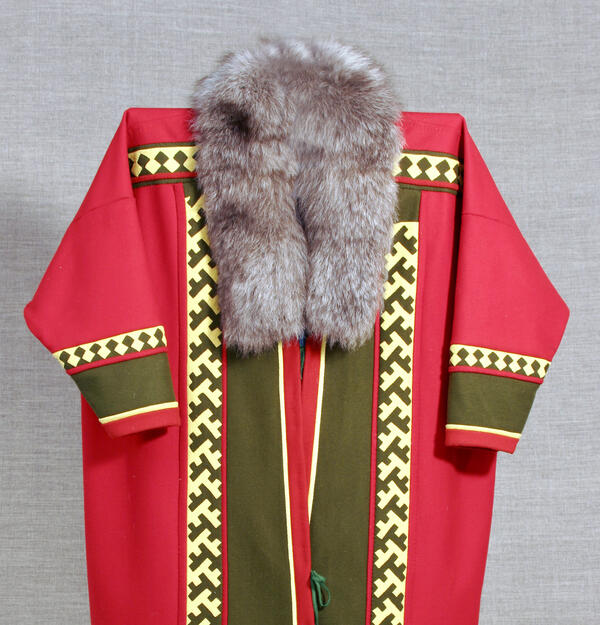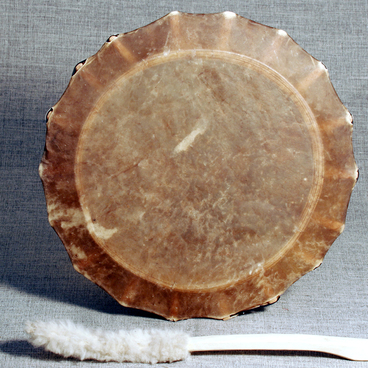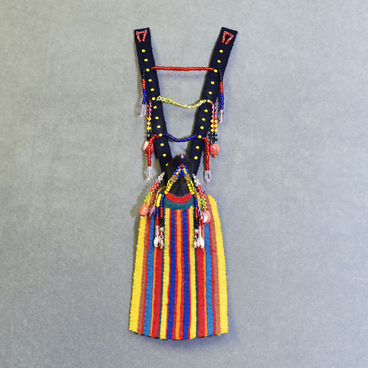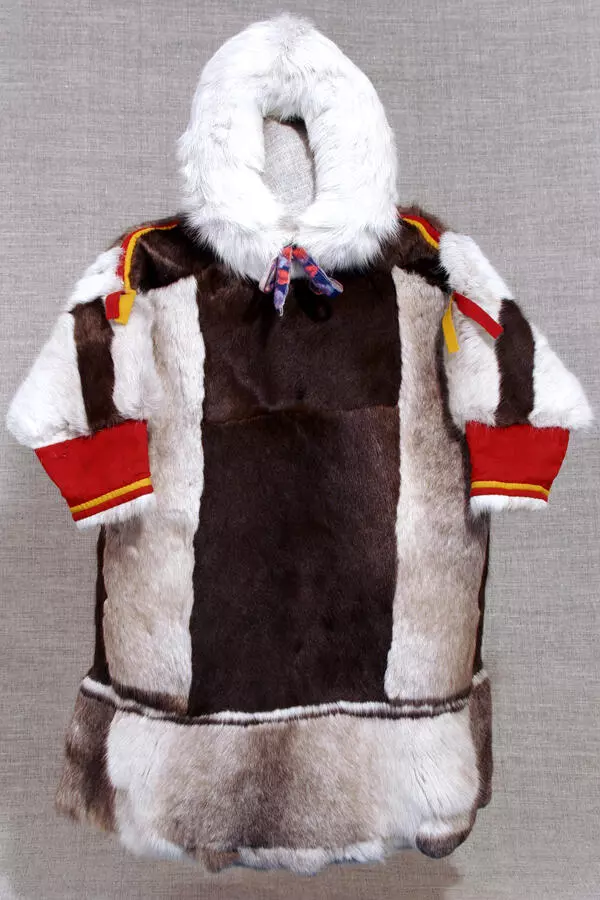A ‘yagUshka’ coat is traditional Forest NEnets female clothing. The winter version is made of reindeer skins and fur, it preserves heat even during the severest frosts. Light coats are made of cloth. This type of outfit suits perfectly the NEnets’ nomadic way of life. Its cutting is the same as of the winter version with a slit in the front, which differs it from a male coat. This design is determined by the Tundra life conditions and the fact that a woman is mostly busy with housekeeping.
A NEnets woman spends most of her time in a chum, and when she needs to go outside, she simply puts the coat over her shoulders. If there’s a long time to be spent in the cold air, the clothing is buttoned up and belted. A loose coat ensures easy breastfeeding on the move without taking the clothes off.
A yagUshka collar is made of blue or red fox fur. Cloth or suede laces are sewn to the lapels, usually there are fourteen, seven at each side.
Traditional female clothing allows to realize the full artistic potential of the Forest Nenets women. A cloth ‘yagUshka’ coat can be of one or two colors. It is richly decorated with national ornaments. All seams are finished with strips of colorful cloth; lapels, a hem and cuffs are decorated with an ornamental ribbon. Each color has its meaning by the Forest NEnets. For instance, green is the color of grass, spring and summer, red means fire, warmth or blood, the beginning of life. Those who wear clothes ornamented with red strips carry fire, warmth and light with them.
The yagushka in the exposition of Gubkinsky Museum of the Development of the North is made by Tatyana Pyak, a Rychi-Yakha camp resident. The body part is made of red cloth, the hem and the cuffs are green. Yellow ornament at the hem is called ‘an elbow of a fox’, the ornament on the shoulder seams and lapels is ‘heads’. The edges of the sides and hem are additionally decorated with decorative stripes.
A NEnets woman spends most of her time in a chum, and when she needs to go outside, she simply puts the coat over her shoulders. If there’s a long time to be spent in the cold air, the clothing is buttoned up and belted. A loose coat ensures easy breastfeeding on the move without taking the clothes off.
A yagUshka collar is made of blue or red fox fur. Cloth or suede laces are sewn to the lapels, usually there are fourteen, seven at each side.
Traditional female clothing allows to realize the full artistic potential of the Forest Nenets women. A cloth ‘yagUshka’ coat can be of one or two colors. It is richly decorated with national ornaments. All seams are finished with strips of colorful cloth; lapels, a hem and cuffs are decorated with an ornamental ribbon. Each color has its meaning by the Forest NEnets. For instance, green is the color of grass, spring and summer, red means fire, warmth or blood, the beginning of life. Those who wear clothes ornamented with red strips carry fire, warmth and light with them.
The yagushka in the exposition of Gubkinsky Museum of the Development of the North is made by Tatyana Pyak, a Rychi-Yakha camp resident. The body part is made of red cloth, the hem and the cuffs are green. Yellow ornament at the hem is called ‘an elbow of a fox’, the ornament on the shoulder seams and lapels is ‘heads’. The edges of the sides and hem are additionally decorated with decorative stripes.





